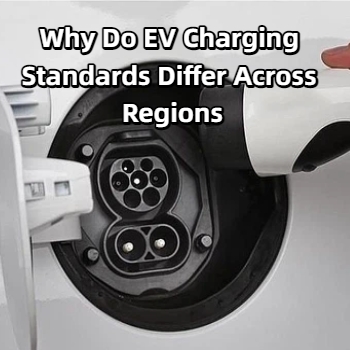Nov 03, 2025
As electric mobility continues to rise globally, charging infrastructure is expanding rapidly. However, charging standards and regulations vary greatly across different markets — from plug types and power levels to communication protocols and safety certifications.
This diversity stems from differences in grid systems, market maturity, and regulatory focus:
🛡️China: Dominated by the GB/T standard, now evolving toward the high-power ChaoJi system.
🛡️Europe: Relies mainly on Type 2 (AC) and CCS2 (DC) connectors, prioritizing interoperability and safety compliance.
🛡️North America: Uses SAE J1772 and CCS1, while Tesla’s NACS connector is rapidly emerging as a new standard.
For manufacturers, such variation demands multi-standard compatibility and design flexibility — the very principles behind FES Power’s R&D philosophy.
🔌 What Are the Key Differences in Power Levels and Plug Types?
From home AC chargers to ultra-fast highway DC stations, each region defines power levels differently:
Region
Common Connectors
Typical Power Range
Key Features
China
GB/T, ChaoJi
7 kW – 1000 kW
Comprehensive national framework for public & commercial use
Europe
Type 2 / CCS2
11 kW – 350 kW
Strong focus on interoperability and safety
U.S.
CCS1 / NACS
7 kW – 500 kW
Competitive, multi-standard environment
To meet this diversity, FES Power’s Cannon 300 and D120 DC fast chargers ⚙️ support CCS1, CCS2, and GB/T standards.
Delivering up to 300 kW of power, they provide flexible, efficient fast-charging solutions for passenger EVs, buses, and heavy-duty fleets.
Whether installed in European public networks or Southeast Asian depots, Cannon 300 enables a safe and rapid “plug-and-charge” experience.
🌿 Are Safety and Certification Requirements the Same Everywhere?
Not at all. Each market enforces distinct certification frameworks for electrical safety, EMC compliance, and ingress protection:
🛡️China: CQC, CCC, GB/T certifications required.
🛡️U.S.: Must comply with UL and FCC standards.
🛡️Europe: CE and EN standards emphasizing LVD and EMC Directives.
FES Power designs products under a multi-certification architecture, ensuring early compliance:
The PC01/PC02 AC chargers are certified for both commercial and residential use.
The EC01 wall-mounted charger features IP65 protection and conforms to both CE (EU) and UL (US) requirements.
Through this global design strategy, our chargers achieve “develop once, certify globally.”
🚗 What’s New in Wireless and Mobile Charging Standards?
Beyond fixed installations, wireless and mobile charging are emerging as new frontiers.
Japan, South Korea, and Germany are developing inductive charging standards, while Western cities are piloting mobile power solutions for flexible deployment.
FES Power’s Meta and Meta+ series ⚙️ are built for this evolution:
Meta (Passive Mobile) enables on-demand charging in parking areas or event zones.
Meta+ (Autonomous Mobile) adds smart navigation and scheduling, achieving true “charger-to-vehicle” flexibility.
These innovations transform charging from static infrastructure into dynamic, adaptable energy mobility, ideal for emergency support or high-demand environments.
🌏 How Should Companies Respond to Global Regulatory Diversity?
To succeed in this fragmented global landscape, charging solution providers must:
⭐️Design Flexibly – Support multiple connector types and communication protocols (OCPP, ISO 15118, etc.).
⭐️Plan for Certification – Anticipate local testing and regulatory pathways.
⭐️Adopt Modular Architecture – Simplify adaptation for export markets.
This is the strategic direction of FES Power
From PC01/02 residential AC chargers and EC01 compact fast chargers, to Cannon 300 / D120 DC chargers and Meta mobile energy systems, our portfolio is built on three pillars:
👉 Global compatibility, application adaptability, and safety reliability.
While standards may differ, the mission remains the same — to power a cleaner, smarter, and connected future of mobility 🌱.
Through innovation and engineering excellence, FES Power continues to lead the way in intelligent charging solutions for the new energy era ⚡.
✅ Learn more at: www.fes-power.com
Read More
